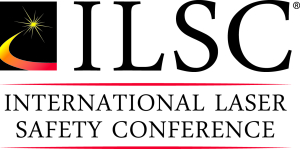Bringing together more than 200 laser safety professionals from around the world, the Laser Institute of America’s International Laser Safety Conference (ILSC®) touched on pressing medical and industrial hazards — as well as safety in unique environments like the Arctic and even outer space.
Held March 23-26 in Albuquerque, N.M., ILSC 2015 illuminated issues with “lasers of immense peak powers, hand-held laser devices with power that cannot have been imagined a decade ago, and ever-expanding applications of the laser,” noted LIA President Robert Thomas of the Air Force Research Laboratory.
Major U.S. facilities like Sandia National Laboratories and SLAC National Accelerator Laboratory shared insights into safety issues surrounding the use of multiple lasers. At Sandia, keynote presenter Bill Seng noted that many of the lab’s more than 1,400 lasers —running the gamut from UV to visible to IR to white-light devices — are employed on aircraft, ships and even in the back of a van to detect potential airborne toxins.
Meanwhile, SLAC enforces a strict internal laser safety program by requiring visitors to take the courses “Laser Accidents & Lessons Learned” and “Laser Alignment Practical,” according to Michael Woods, the facility’s certified Laser Safety Officer. With dozens of lasers in house and more on the way, SLAC published a 27-page guidance document in August to augment their “Laser Supervisor Safety” training. The document covers everything from job roles and training of laser personnel to laser laboratory design, interlock requirements and even service subcontractor visits.
A laser will be found in a less traditional research environment when a team sets up a powerful 400 Millijoule device at a summit camp on the Greenland ice cap. With temperatures ranging from a summer high around minus 11 degrees Celsius to winter lows around minus 50, researchers have had to model potential beam behavior as it interacts with super-cold particles like snow and fog, said Michael O’Neill of the University of Colorado, Boulder. The goal is to protect workers in the building housing the autonomous system, which will run 24 hours a day, seven days a week in a location at 3.2 kilometers altitude and about 500 miles from the coast.
Looking beyond the horizon and into space, Patrick Shriver of Metatech Corp. examined the risks of accidental lasers strikes on satellites and their sensitive optical sensors. He suggested an international registry to document most lasers that can propagate beams into or through space, including space-based lasers. From there, safe-operation standards could be created.
For industrial laser uses, more powerful and brighter lasers will necessitate the continued evolution of hazard prevention and industrial work stations. For example, David Havrilla of TRUMPF noted that diode-pumped disk lasers are being combined to achieve outputs of 20 kW to 30 kW and could enter the terawatt regime. He also noted that TRUMPF and IFSW Stuttgart achieved more than 1.3 kW average power at picosecond pulse duration. Meanwhile, Tim Webber of IPG Photonics detailed advances in fiber laser powers on the order of 30 kW to 100 kW, for instance in welding applications for shipbuilding. These significant power densities will require “a little bit more science and a little bit more study” to properly address brightnesses and barrier requirements, Webber noted.
In the medical realm, longstanding discussions of the dangers of surgical smoke and precautions to avoid patient airway fires during surgery were fueled by many case studies of accidents — including one that resulted in $30 million in damages. In that 2012 case in Washington state, a 53-year-old woman with a history of vocal cord polyps suffered extensive burns and eventually died when the endotracheal tube being used ignited during surgery with a CO2 laser. Numerous factors played into the accident, according to attorney Matthew Wojcik, including insufficient training of the surgeon, anesthesiologist and “laser nurse.” Furthermore, the surgeon was unfamiliar with the tube used, and the hospital’s Laser Safety Officer had left two years prior and not been replaced by someone similarly credentialed.
Amplifying the need for more certified medical laser safety officers, Richard Gama of UHS discussed the laser rental company’s informal survey that found about 40 percent of 266 health-care facilities responding did not have a CMLSO or laser safety program.
Robert Scroggins of Buffalo Filter shared the latest information about the deleterious particles that can be present in and transferred by surgical smoke. Surgical smoke contains over 40 hazardous chemicals, he said, including carcinogens. Interactions of chemicals in the plume can be more hazardous than individual components like benzene. Biological components like HPV, HIV, viral DNA and Hepatitis B virus can sit in the lungs; there are even documented cases of cancer in surgeons who performed laser surgeries and were subjected to the plume.
ILSC will return in the spring of 2017. Check the ILSC website at lia.org/ILSC for updates, and if you are interested in joining the ILSC program committee, email ILSC@lia.org. Visit our website www.lia.org/conferences to stay informed on other LIA conferences coming up in 2015.
About LIA
The Laser Institute of America (LIA) is the professional society for laser applications and safety serving the industrial, educational, medical, research and government communities throughout the world since 1968.
www.lia.org, 13501 Ingenuity Drive Ste 128, Orlando, FL 32826, +1.407.380.1553.
###






